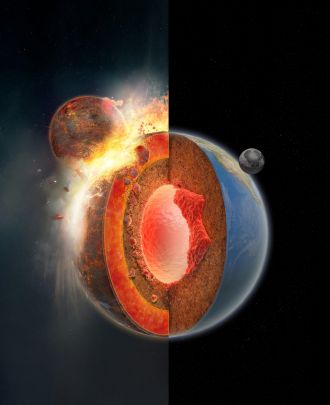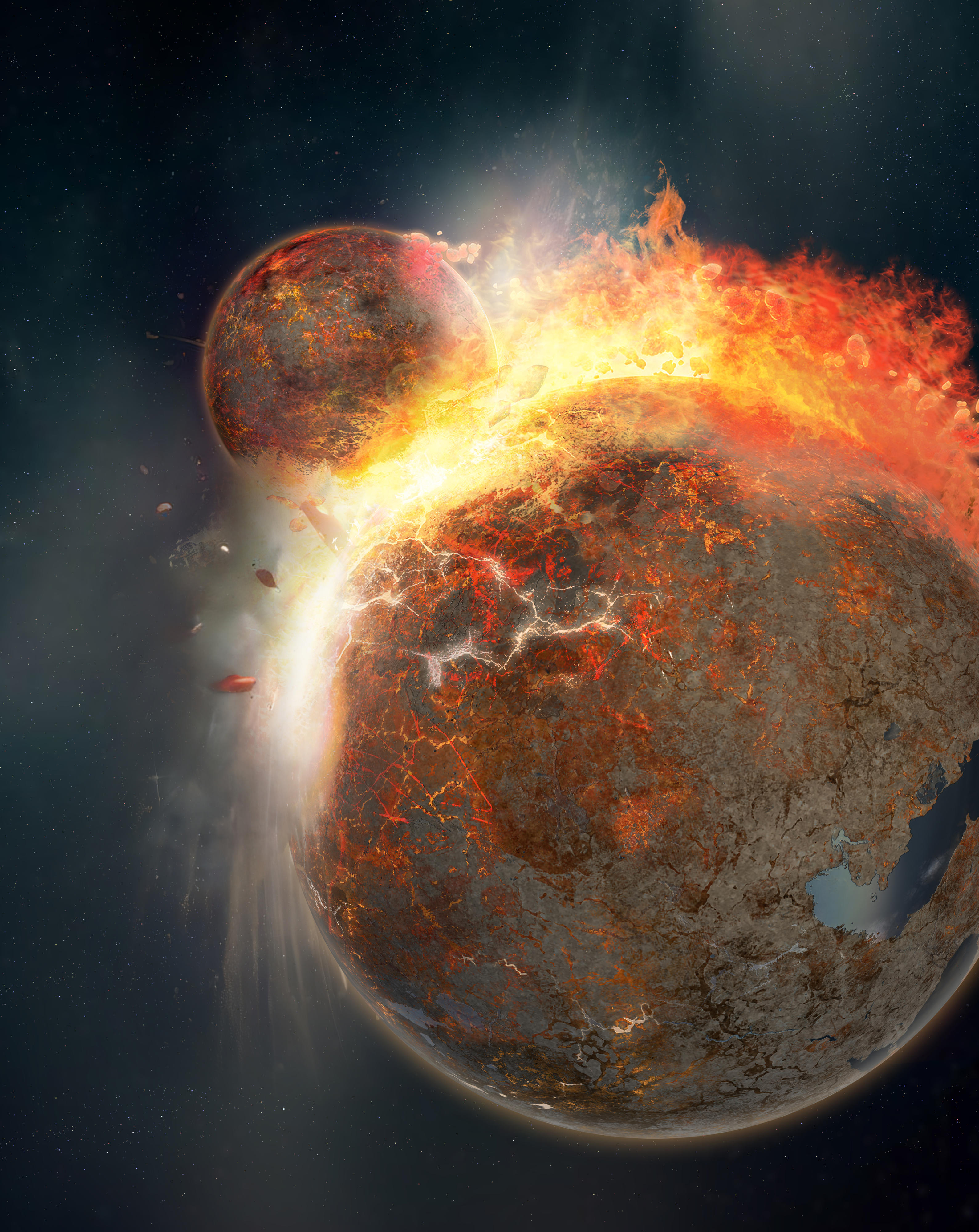Media release
From:
Planetary science: Ancient, Moon-forming collision altered Earth’s mantle *IMAGES*
A giant collision between the ancient protoplanet Theia and the proto-Earth about 4.5 billion years ago may have formed distinct regions within Earth’s mantle, suggests a Nature paper based on computer simulations. This giant, Moon-forming collision is proposed to have buried relics of Theia deep within Earth’s mantle. The findings may improve our understanding of the formation of Earth and the Moon.
The giant impact scenario involves a protoplanet known as Theia having collided with the proto-Earth, leading to the formation of Earth’s Moon from the impact debris. However, direct evidence for the existence of Theia remains elusive.
Qian Yuan and colleagues used computer simulations to propose an explanation for the observation that two large regions of the Earth’s mantle show anomalous slow seismic velocity at about 2,900 km depth. The material in these regions has been suggested to be between 2.0 and 3.5% denser than the surrounding mantle. The authors suggest that the dense materials may represent buried relics of Theia’s mantle material that were preserved in the deep proto-Earth after the Moon-forming giant impact. These dense Theia relics are proposed to have been tens of kilometres across, and the authors suggest that they sunk to the lower region of the mantle and accumulated to form dense blobs above the Earth’s core, which survive to the present day.
These dense regions may be a natural consequence of the Moon-forming giant impact, the authors suggest. Additionally, because giant impacts are common at the end stages of planet accretion, similar mantle heterogeneities caused by impacts may also exist in the interiors of other planetary bodies.
Multimedia









 International
International


